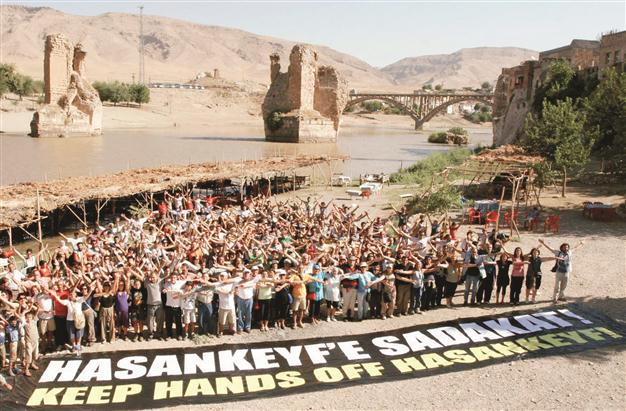Expert report favors Ilısu Dam construction
Serkan Ocak - ISTANBUL / Radikal

Hasankeyf is home to 550 archeological sites and settlements spanning thousands of years of history, from 2000 BC to the end of the Ottoman period in the early 20th century. Hürriyet photo
The completion of the Ilısu Dam will flood parts of the historical town of Hasankeyf in the southeastern province of Batman but will provide a significant boost for Turkey’s economy, according to an experts’ court report.
“The Ilısu Dam is expected to provide significant contributions to the social, economic and cultural development of the region and its vicinity. Hydroelectric dams cause the least damage to the environment in comparison to nuclear and thermal power plants,” said the experts’ report, issued 11 years after a lawsuit was first filed by lawyer Murat Cano to revoke the agreement for the dam’s construction.
Hasankeyf is home to 550 archeological sites and settlements spanning thousands of years of human history, from 2000 B.C. to the end of the Ottoman period in the early 20th century, according to a report prepared by Professor Necati Ağiralioğlu, a water expert in Istanbul University’s civil engineering department, Associate Professor Feridun Özgümüş, a Byzantine historian and Associate Professor Şevket Dönmez, an Istanbul University archeologist.
However, the artifacts on the site to be innundated can be moved to another location, added the report, which was submitted to an administrative court in the southeastern province of Diyarbakır.
Government officials have repeatedly expressed their intent to press on with the dam’s construction in the past, despite the vigorous opposition raised by various non-governmental organizations (NGOs).
The experts’ report further argued that dams across the world boost locals’ incomes, create employment and foster trade and transportation. The Ilisu Dam was also expected to contribute $300 million annually to Turkey’s economy.
Prudent planning is also required to help mitigate the dam’s unfavorable impact on the local environment, the report said.
Cano, however, has objected to the report, claiming the experts were biased. Both Özgümüş and Dönmez are employed as ministerial representatives on conservation councils in Ankara and Istanbul, respectively, while Ağıralioğlu is a member of the Istanbul Waterworks Authority (İSKİ), he said.
Cano said it was unclear as to how the artifacts were going to be conserved or how they were to be moved. “Moreover, the report speaks of 550 settlements. Even the continents of [North and South] America probably do not contain this many artifacts,” he said.
“The cliff where the fortress is located will not be submerged, but if it gives way and collapses, the 5,000 cave settlements behind it will be damaged,” he said.
